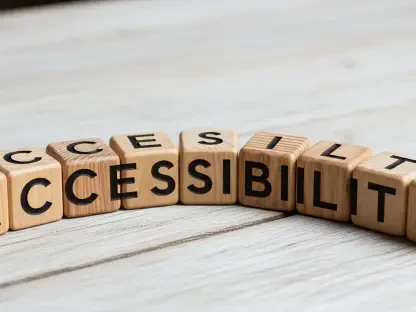This guide aims to equip brand owners, consumers, and industry stakeholders with actionable strategies to navigate the rising tide of state-led enforcement against online counterfeiting on e-commerce platforms. It provides a clear roadmap for understanding the legal landscape, protecting intellectual property, and collaborating with state authorities to combat the sale of fake goods. By following the steps outlined, readers will gain the knowledge and tools needed to safeguard their interests and contribute to a more secure online marketplace.
Why This Guide Matters
Imagine purchasing a product online, only to discover it’s a counterfeit that not only fails to meet expectations but also poses a safety risk. This scenario is becoming alarmingly common, with counterfeit goods flooding e-commerce platforms and costing legitimate businesses billions annually. The economic damage extends beyond individual brands, impacting state revenues and consumer trust in digital shopping. This guide addresses the urgent need to tackle this issue by highlighting how states are taking legal action against online marketplaces and offering practical steps for stakeholders to join the fight.
The importance of this resource lies in its focus on the growing role of state governments in holding e-commerce platforms accountable for facilitating counterfeit sales. With federal legislation lagging, states are stepping into the breach, filing lawsuits and pushing for stricter oversight. For brand owners and consumers, understanding these developments is critical to protecting rights and ensuring a fair marketplace. This guide breaks down complex legal trends into manageable actions, empowering readers to respond effectively to the challenges posed by online counterfeiting.
Moreover, the broader implications of state-led enforcement affect the entire e-commerce ecosystem. As legal pressures mount, platforms may face increased liability, while brand owners must adapt to a shifting landscape of enforcement and compliance. This guide serves as a timely tool to navigate these changes, offering clarity on state actions and federal shortcomings. It aims to foster collaboration among all parties to build a safer, more trustworthy online shopping environment.
Step-by-Step Instructions to Combat Online Counterfeiting
Step 1: Understand the Scope of State-Led Lawsuits Against E-Commerce Platforms
Begin by familiarizing yourself with the recent surge in state-led legal actions targeting online marketplaces for their role in counterfeit sales. State attorneys general are increasingly filing lawsuits against major platforms, alleging negligence in monitoring third-party sellers and allowing fake goods to proliferate. These cases often focus on the harm to iconic local brands, which suffer significant revenue losses and reputational damage. Staying informed about specific lawsuits in your state or region can provide insight into local enforcement priorities and potential opportunities for involvement.
To delve deeper, research public records or legal announcements from state officials to identify active cases. Pay attention to the accusations leveled against platforms, such as failing to verify seller authenticity or ignoring reports of counterfeit listings. Understanding these allegations helps in assessing whether similar risks affect your brand or business. Keep track of legal outcomes, as they may set precedents that influence platform policies or state regulations impacting your operations.
A key tip is to connect with industry associations or legal experts who monitor these developments. They can offer detailed analyses of how state lawsuits might affect e-commerce practices and provide guidance on preparing for potential ripple effects. This foundational knowledge ensures you are not caught off guard by sudden shifts in enforcement or liability standards.
Step 2: Recognize the Economic and Safety Impacts of Counterfeiting
Next, grasp the broader consequences of counterfeit goods on state economies and public welfare to appreciate why states are taking such aggressive action. Counterfeiting drains tax revenue by diverting sales from legitimate businesses, undermining local economies. It also erodes consumer confidence in online shopping, as buyers grow wary of purchasing substandard or unsafe products. For brand owners, the financial hit from lost sales is compounded by the tarnishing of their reputation when customers unknowingly buy fakes.
Consider the safety risks posed by counterfeit items, which often fail to meet quality standards. Fake electronics, cosmetics, or pharmaceuticals can cause physical harm, leading to public health concerns that states are eager to address. Recognizing these dual threats—economic and safety-related—helps in understanding the urgency behind state lawsuits and the motivation for stricter oversight of e-commerce platforms. This awareness can guide your advocacy or protective measures.
To apply this understanding, evaluate how counterfeiting directly affects your business or community. Document instances where fake products have led to customer complaints or financial losses, as this data can support collaboration with state authorities. Staying attuned to these impacts also prepares you to communicate effectively with policymakers or platform representatives about the need for stronger anti-counterfeiting measures.
Step 3: Analyze Federal Legislative Gaps and Their Implications
Take time to examine the limitations of federal laws in addressing online counterfeiting, as this explains why states are stepping up. The INFORM Consumers Act, while mandating transparency by requiring platforms to disclose seller information, lacks robust enforcement mechanisms to deter fake sales. This leaves a significant gap in holding marketplaces accountable for the actions of third-party vendors, pushing states to act independently.
Additionally, note the stalled progress of the SHOP SAFE Act, which aims to impose stricter liability on platforms for failing to curb counterfeiting. Despite multiple attempts to pass this legislation, it remains unenacted, creating frustration among stakeholders seeking comprehensive federal solutions. Understanding these shortcomings highlights the importance of state-level interventions and the need for alternative strategies in the interim.
A practical approach is to monitor updates on federal legislation through reliable news sources or industry reports. Assess how these gaps affect your ability to protect intellectual property and consider joining coalitions that advocate for stronger laws. Being aware of the federal landscape equips you to adapt to a fragmented enforcement environment and prioritize state-level partnerships as a more immediate resource.
Step 4: Build Partnerships with State Authorities for Enforcement Support
Actively seek collaboration with state officials to strengthen anti-counterfeiting efforts. Many state attorneys general welcome input from brand owners and businesses affected by fake goods, as this helps build stronger cases against e-commerce platforms. Reach out to relevant offices to share evidence of counterfeit sales impacting your brand, such as specific listings or customer feedback, to support ongoing lawsuits or investigations.
Establishing these partnerships can also provide access to resources or initiatives aimed at protecting local brands. Some states may offer programs or task forces focused on intellectual property enforcement, which can amplify your efforts. Attend public hearings or forums hosted by state agencies to voice concerns and learn about planned actions, ensuring your perspective is considered in shaping policies.
A helpful tip is to maintain consistent communication with state contacts, providing updates on new counterfeiting incidents as they arise. Document all interactions and shared information to create a record that may prove useful in legal or advocacy contexts. Such alliances not only bolster state enforcement but also position your brand as a committed partner in safeguarding the local economy.
Step 5: Engage Directly with E-Commerce Platforms to Remove Counterfeit Listings
Work closely with online marketplaces to address counterfeit listings affecting your brand. Most major platforms have internal mechanisms or dedicated teams for handling intellectual property violations, allowing brand owners to report fake products for removal. Submit detailed complaints, including evidence like product images or purchase records, to expedite the process of taking down infringing listings.
Beyond reporting, consider enrolling in platform-specific brand protection programs if available. These often provide tools for monitoring listings and preemptively blocking unauthorized sellers. Regular interaction with platform representatives can also foster a cooperative relationship, making it easier to resolve issues swiftly. This direct engagement is a critical line of defense while broader legal reforms are pending.
For best results, assign a team member to oversee platform interactions and track the status of reported violations. Keep a log of all submissions and responses to identify patterns or recurring sellers, which can inform future prevention strategies. Persistence in engaging with platforms ensures that counterfeit goods are addressed at the source, minimizing immediate harm to your brand.
Step 6: Advocate for Stronger Intellectual Property Protections at State and Federal Levels
Take an active role in pushing for legislative reforms that enhance protections against online counterfeiting. At the state level, support bills or initiatives that impose stricter oversight on e-commerce platforms or increase penalties for counterfeit sales. Contact state legislators to share personal experiences with counterfeiting and emphasize the economic toll on local businesses, making a compelling case for change.
On the federal front, join industry groups or coalitions lobbying for laws like the SHOP SAFE Act, which would hold platforms liable for failing to prevent fake sales. Participate in public comment periods or congressional hearings to ensure your voice contributes to shaping national policy. Advocacy at both levels is essential to drive systemic improvements that complement state lawsuits and individual efforts.
A strategic approach is to collaborate with other affected brands to amplify your message. Pool resources to fund campaigns or hire lobbyists who can navigate the legislative process effectively. Staying engaged in advocacy keeps pressure on lawmakers to prioritize intellectual property issues, paving the way for a more robust legal framework over time.
Broader Impacts on the E-Commerce Landscape
State lawsuits and the push for accountability are reshaping how e-commerce platforms operate, potentially leading to tighter regulations and increased liability. As states continue to press legal action, platforms might implement stricter seller verification processes or invest in advanced detection technologies to avoid further scrutiny. This shift could raise operational costs for marketplaces, possibly affecting pricing or access for smaller sellers, while also improving the overall integrity of online shopping.
Looking ahead, the possibility of unified federal legislation remains a critical factor. If laws like the SHOP SAFE Act gain traction, they could standardize enforcement across states, reducing the current patchwork of regulations. However, balancing innovation with enforcement will be a challenge, as overly stringent rules might stifle the growth of e-commerce. Stakeholders must remain vigilant to ensure that emerging policies protect intellectual property without hampering legitimate business activities.
Consumer behavior is also likely to evolve in response to these trends. Greater awareness of counterfeiting risks, coupled with visible state actions, may lead shoppers to prioritize trusted platforms or verified sellers. This shift could pressure marketplaces to enhance transparency and build trust, ultimately benefiting consumers and legitimate brands. Monitoring these changes will be essential for adapting business strategies to a dynamic digital environment.
Final Reflections and Next Steps
Reflecting on the journey through this guide, the steps taken to understand state-led lawsuits, recognize the impacts of counterfeiting, analyze federal gaps, and build partnerships with authorities and platforms proved instrumental in addressing the challenge. Engaging in advocacy for stronger laws marked a proactive stance, ensuring that the fight against fake goods moved beyond immediate fixes to long-term solutions. Each action contributed to a clearer grasp of the complex enforcement landscape.
Moving forward, stakeholders should consider expanding their efforts by joining broader industry networks focused on anti-counterfeiting. Exploring technological solutions, such as blockchain for product authentication, offers a promising avenue to prevent fake sales at the source. Additionally, maintaining dialogue with state and federal policymakers ensures that evolving challenges are met with updated strategies, fostering a resilient approach to protecting intellectual property in an ever-changing online marketplace.









